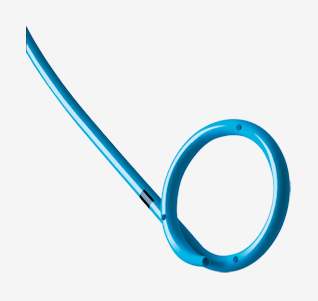Index
Introduction
The importance of urology and the role of catheters
Urology is a medical specialty dedicated to the diagnosis, treatment, and prevention of diseases related to the urinary system and the male reproductive system. This field of medicine is pivotal for the health and well-being of both men and women, as it covers conditions that affect the kidneys, ureters, bladder, and urethra, as well as male reproductive organs.
Catheters play a key role in the treatment of various urological diseases. They are tubular medical devices, designed to be inserted into organs or body passages, with the purpose of facilitating the drainage of fluids, relieving obstructions, or providing access for medical procedures. In the realm of urology, catheters are often used to address issues like kidney stones, urinary tract infections, and ureteral obstructions.
The Double J Catheter: an effective solution for urological issues
Among the array of catheters available for use in urology, the double J catheter stands out as a versatile and effective option. Also known as a ureteral catheter or ureteral stent, the double J is a flexible tube with curved “J” shaped ends. It is used to ensure the proper flow of urine from the kidney to the bladder, even in the presence of obstructions or other complications.
In this article, we will delve deep into the double J catheter, discussing its indications, the placement procedure, necessary post-insertion care, potential complications, and the removal process. Understanding the operation and applications of the double J is crucial for patients and healthcare professionals dealing with urological conditions that require such interventions.
Valuable information for patients and healthcare professionals
This comprehensive guide aims to provide relevant information both for patients who may need the use of the double J catheter and for healthcare professionals working in the field of urology. Throughout the article, we will address essential facets about the double J, including its indications, the procedures for insertion and removal, care, and possible complications associated with its use.
By becoming familiar with the double J catheter, patients can make more informed decisions about their treatment and better understand what to expect throughout the process. Healthcare professionals, on the other hand, can enhance their knowledge and stay updated on this pivotal tool in the treatment of urological conditions.
With a comprehensive and informative approach, our goal is to offer a valuable resource for all those interested in learning more about the double J catheter and its role in treating urological diseases. We hope this guide assists you on your journey to better understand the workings and applications of this technique, contributing to your well-being or the refinement of your medical practice.
Now that we’ve introduced the importance of urology, the role of catheters, and the significance of the double J catheter, we’re ready to deepen our understanding of this medical device and explore its indications, procedures, and related care. Continue reading and discover everything you need to know about the double J catheter!
What is the Double J Catheter?
Defining the Double J Catheter
The double J catheter is a medical device used in the field of urology to assist in the drainage of urine from the kidneys to the bladder in cases of obstruction or other complications affecting urinary flow. It is a thin and flexible tube, typically made from materials like silicone, polyurethane, or other biocompatible polymers, designed specifically to be inserted into the ureter.
Structure and Function of the Double J Catheter
The distinctive structure of the double J catheter includes two curved ends shaped like a “J”, which gives rise to its name. These curves serve to keep the catheter in place inside the ureter and prevent its displacement or migration. The upper end of the catheter is positioned within the kidney, while the lower end extends to the bladder. The length of the catheter varies based on the patient’s size and the specific needs of the case.
The primary function of the double J catheter is to facilitate proper urine drainage, even in the presence of obstructions or other issues that might compromise normal flow. When inserted into the ureter, the catheter creates an additional channel that allows for urine passage, preventing fluid buildup in the kidney and warding off potential kidney damage. Moreover, the catheter can also help alleviate pain and discomfort caused by the obstruction.
Ureteral Catheter or Ureteral Stent: Other Names for the Double J
It’s common for the double J catheter to be referred to by other names, such as ureteral catheter or ureteral stent. These terms are used interchangeably and refer to the same device. The term “stent” is used in medicine to describe a tube inserted into a blood vessel, duct, or canal to keep it open and allow the flow of fluids. In the case of the double J catheter, the term “ureteral stent” emphasizes its function of maintaining urine passage through the ureter.
Versatility and Applications of the Double J Catheter
The versatility of the double J catheter allows it to be used in a variety of clinical situations, including the treatment of kidney stones, ureteral stenosis, urinary tract infections, and post-operative conditions, like preventing obstructions after urological surgeries. Its use might also be indicated to relieve pressure on the kidneys caused by tumors, retroperitoneal fibrosis, or other conditions that may compress the ureter and prevent proper urine drainage.
In summary, the double J catheter is an essential medical device in the realm of urology, with a unique structure and specific function that makes it ideal for treating various conditions affecting urinary flow.
Indications for Using the Double J
Primary Indications for the Use of the Double J Catheter
The double J catheter is employed to treat various urological conditions affecting urine flow. The main indications for the use of the catheter include:
- Kidney Stones: When sizable renal stones block the ureter, the double J catheter can be inserted to facilitate urine drainage and relieve pressure on the kidney. In some instances, the catheter may be used in conjunction with other treatments to fragment or remove the stones.
- Ureteral Obstructions: The double J is indicated to address obstructions in the ureter caused by various reasons, such as ureteral stenosis (narrowing of the ureter), tumors, retroperitoneal fibrosis, among others. The catheter helps maintain urine flow and can be a temporary or permanent solution, depending on the clinical situation.
- Following Urological Surgeries: The double J catheter may be utilized after surgical procedures, like tumor removal or stenosis correction, to ensure proper urine drainage and prevent possible complications, such as clot formation or ureter obstruction.
- Urinary Tract Infections: In cases of severe or recurrent infections, the double J may be employed to enhance urine drainage and facilitate antibiotic treatment.
- Hydronephrosis: The double J catheter is indicated to relieve pressure on the kidneys caused by hydronephrosis, a condition where the kidney expands due to urine accumulation. The catheter helps drain excess fluid and prevent kidney damage.
Benefits and Expected Outcomes with Catheter Use
Using the double J catheter offers multiple benefits to patients, such as:
- Pain and Discomfort Relief: The double J catheter aids in urine drainage, alleviating pressure on kidneys and ureters, and, consequently, reducing pain and discomfort caused by obstructions or other complications.
- Prevention of Kidney Damage: By facilitating urine drainage and preventing fluid buildup in the kidneys, the double J can avert permanent kidney damage caused by hydronephrosis or infections.
- Facilitation of Treatment: The double J catheter can be used in tandem with other treatments, like extracorporeal shock wave lithotripsy (ESWL) to break up kidney stones, or the administration of antibiotics to address infections.
- Faster Post-Surgical Recovery: Placing the double J catheter after surgical procedures can help ensure proper urine drainage and avert complications, contributing to a swifter and more efficient recovery.
- Quality of Life Improvement: By addressing obstructions, alleviating pain, and preventing complications, the double J catheter enhances the quality of life for patients affected by urological conditions.
The expected outcomes with the double J catheter use vary based on the patient’s specific condition and the treatment objective. Generally, the catheter is anticipated to improve urine drainage, diminish pain and discomfort, and prevent complications associated with obstructed urinary flow.
It’s vital to underscore that the double J catheter isn’t a definitive solution for all urological conditions. In some instances, additional procedures, like surgeries or treatments to break up or remove kidney stones, might be required. Nonetheless, the double J plays a pivotal role in treating various urological diseases and can be a valuable tool for both patients and healthcare professionals.
In conclusion, the double J catheter is a versatile and effective medical device, indicated to treat a range of conditions affecting urine flow. By ensuring proper urine drainage, relieving pain, and averting complications, the double J catheter provides significant benefits to patients and contributes to enhancing their quality of life.
The Placement Procedure of the Double J
Patient Preparation and Anesthesia
The placement of the double J catheter is a minimally invasive procedure that requires proper patient preparation. Prior to the procedure, the doctor may request blood tests and imaging studies, such as ultrasound or computed tomography, to assess the condition of the urinary tract and determine the best approach for catheter placement.
The patient might also be advised to stop taking anticoagulant or anti-inflammatory medications a few days before the procedure to reduce the risk of bleeding. Furthermore, fasting from solid and liquid foods for a period specified by the doctor might be required.
Generally, the double J catheter placement is performed under local anesthesia or conscious sedation, meaning the patient will remain awake but will have the treated area anesthetized and pain-free. The choice of anesthesia will depend on the patient’s clinical conditions and the doctor’s preferences.
The Double J Placement Process
The procedure for placing the double J catheter can be carried out by urologists or interventional radiologists and involves several steps:
- Accessing the urinary tract: The doctor inserts a cystoscope (a thin tube with a camera at the tip) through the urethra and directs it to the bladder. This allows the doctor to view the inside of the urinary tract and identify the opening of the affected ureter.
- Catheter introduction: With the assistance of the cystoscope, the doctor inserts a guide wire into the ureter opening and directs it to the kidney. Then, the double J catheter is introduced over the guide wire and properly positioned, with one end in the kidney and the other in the bladder.
- Position verification: After the catheter’s insertion, the doctor may use a fluoroscope (a real-time X-ray equipment) to confirm the catheter’s correct positioning and make adjustments if necessary.
- Procedure conclusion: With the double J catheter properly positioned, the guide wire and cystoscope are removed. The procedure typically takes about 30 minutes to an hour, depending on the case’s complexity.
Professionals Involved in the Double J Placement
The placement of the double J catheter can be performed by both urologists and interventional radiologists. The choice of professional will depend on the patient’s preferences, the doctor’s, and specific clinical conditions. Generally, both professionals have the necessary experience and skills to perform the procedure safely and effectively.
In summary, the placement of the double J catheter is a minimally invasive procedure that requires proper patient preparation and can be performed by either urologists or interventional radiologists.
Post-Procedure Care and Possible Complications
Post-Placement Care for the Double J Catheter
After the placement of the double J catheter, it is essential that the patient follows medical recommendations and takes the necessary precautions to ensure proper recovery and prevent complications. Some of the care measures include:
- Maintaining hygiene: Personal hygiene is crucial to prevent infections. It’s essential to clean the genital area daily with water and mild soap thoroughly.
- Monitoring for signs of infection: The patient should be vigilant for signs of infection, such as fever, chills, pain or discomfort in the lumbar region, cloudy or strong-smelling urine, and increased urinary frequency. If any of these symptoms appear, it’s vital to contact the doctor immediately.
- Following medical recommendations: The patient must adhere to all doctor’s instructions, including taking prescribed medications, undergoing follow-up examinations, and returning for routine consultations.
- Proper hydration: Staying well-hydrated is crucial to facilitate urine drainage and prevent the formation of new kidney stones. The patient should drink plenty of water, as advised by the doctor.
- Avoiding intense physical activities: During recovery, it might be necessary to avoid intense physical activities that could cause discomfort or displace the catheter. The doctor will provide guidance on permitted activities and the required rest duration.
Possible Complications and Side Effects
While the placement of the double J catheter is generally safe, complications and side effects can occur. Some of the most common include:
- Discomfort: The patient may experience some discomfort following the procedure, like pain in the lumbar region, urinary urgency sensation, or burning during urination. These symptoms generally improve over time and can be managed with medications prescribed by the doctor.
- Infections: The catheter’s presence might increase the risk of urinary tract infections. Proper hygiene and attentiveness to infection signs are critical for early treatment.
- Displacement or migration of the catheter: In some instances, the double J catheter might displace or migrate to another position, leading to pain, obstruction, or ineffective urine drainage. Should displacement occur, the doctor might need to reposition or replace the catheter.
- Catheter obstruction: Over time, the catheter might become obstructed, causing pain and difficulty in draining urine. In such cases, catheter replacement might be necessary.
- Allergic reaction or irritation: Although rare, some patients might experience an allergic reaction or irritation to the catheter materials. Any adverse reactions should be promptly reported to the doctor for evaluation and best-course determination.
- Bleeding: It’s common for patients to observe small amounts of blood in their urine after catheter placement. However, persistent or significant bleeding could signal complications and necessitate medical attention.
- Formation of new kidney stones: While the double J catheter can help treat kidney stones, in some cases, its presence might promote new stone formation. To prevent this, staying hydrated and following the doctor’s dietary and care recommendations are essential.
In conclusion, the placement of the double J catheter requires post-operative care to ensure proper recovery and prevent complications. By adhering to medical recommendations, maintaining proper hygiene, and monitoring for possible signs of infection, patients can minimize risks and ensure a successful recovery. However, it’s crucial to be aware of the potential complications and side effects associated with the catheter’s use and inform the doctor if any issues arise.
Removal of the Double J Catheter
The Double J Catheter Removal Procedure
The removal of the double J catheter is a significant step in treating urological issues and should be performed in the appropriate timeframe as indicated by the physician. The removal procedure can vary depending on the type of catheter used and the overseeing doctor, but generally follows the subsequent steps:
- Preparation: The patient will be instructed to empty the bladder before the procedure, and may be asked to take some medication to aid in relaxation and pain reduction.
- Anesthesia: Depending on the case’s complexity and the catheter type, the doctor might opt to use local, regional anesthesia, or even mild sedation to ensure the patient’s comfort during removal.
- Procedure: The doctor, typically a urologist, uses a cystoscope (a thin, flexible instrument with a camera at its tip) to visualize the catheter and guide it during removal. The cystoscope is introduced through the urethra into the bladder, where the double J catheter is located. The doctor then uses an appropriate instrument to grasp the catheter and carefully remove it through the urethra.
- Conclusion: After successful catheter removal, the patient might experience temporary discomfort, such as a burning sensation during urination or urgency. These symptoms usually improve within a few days and can be addressed with medications prescribed by the doctor if necessary.
The Importance of Timely Removal
Removing the double J catheter in the appropriate timeframe is crucial to prevent complications and ensure a successful recovery. Some reasons include:
- Preventing infections: Prolonged presence of the catheter can elevate the risk of urinary tract infections. Timely catheter removal helps minimize this risk.
- Avoiding obstructions and displacements: Over time, the double J catheter can become obstructed or displaced, which may cause pain and difficulty in urine drainage. Prompt removal helps ward off such complications.
- Promoting recovery: Removing the catheter allows the urinary tract to resume its normal functioning, aiding the patient in fully recovering from the treated urological issue.
- Preventing complications related to catheter material: Prolonged use of the catheter might lead to irritation, allergic reactions, or the formation of new kidney stones. Removing the catheter as recommended by the doctor assists in circumventing these complications.
Conclusion
In this article, we addressed several crucial aspects related to the double J catheter, a medical device widely used in the treatment of various urological conditions. Recapping the key points discussed throughout the text:
The Significance of the Double J Catheter
The double J catheter, also known as a ureteral catheter or ureteral stent, plays an essential role in managing urological diseases. It is employed to ensure proper urine drainage from the kidney to the bladder, alleviating pain and preventing kidney damage in cases of ureteral obstructions, kidney stones, among other conditions.
Indications for the use of the Double J Catheter
The primary indications for using the double J catheter include treating kidney stones, ureteral obstructions, post-urological surgeries, and situations requiring temporary ureter dilation. The catheter provides pain relief, improved urine drainage, and aids in the patient’s recovery.
Placement and Removal Procedures
The placement of the double J catheter is performed by a specialist, such as a urologist or interventional radiologist, involving anesthesia and minimally invasive techniques. The removal procedure is also carried out by the physician and should occur at the appropriate time to prevent complications.
Care and Possible Complications
Following the catheter’s insertion, it is vital to adhere to medical recommendations and maintain proper hygiene to prevent complications like infections, discomfort, and catheter displacement. Being aware of the potential side effects and complications associated with the catheter’s use is crucial for ensuring a successful recovery.
The Double J Catheter’s Relevance in Treating Urological Conditions
The double J catheter is a fundamental tool in treating various urological conditions, offering symptom relief and aiding patient recovery. When appropriately indicated and executed, its use can significantly enhance the quality of life for patients affected by urological diseases.
In conclusion, the double J catheter is a valuable tool in treating an array of urological conditions. It’s imperative that both patients and healthcare professionals are knowledgeable about the catheter’s indications, care, potential complications, and related procedures to ensure successful treatment and recovery. We hope this guide has provided enlightening and beneficial information concerning the use, indications, and necessary care pertaining to the double J catheter.




